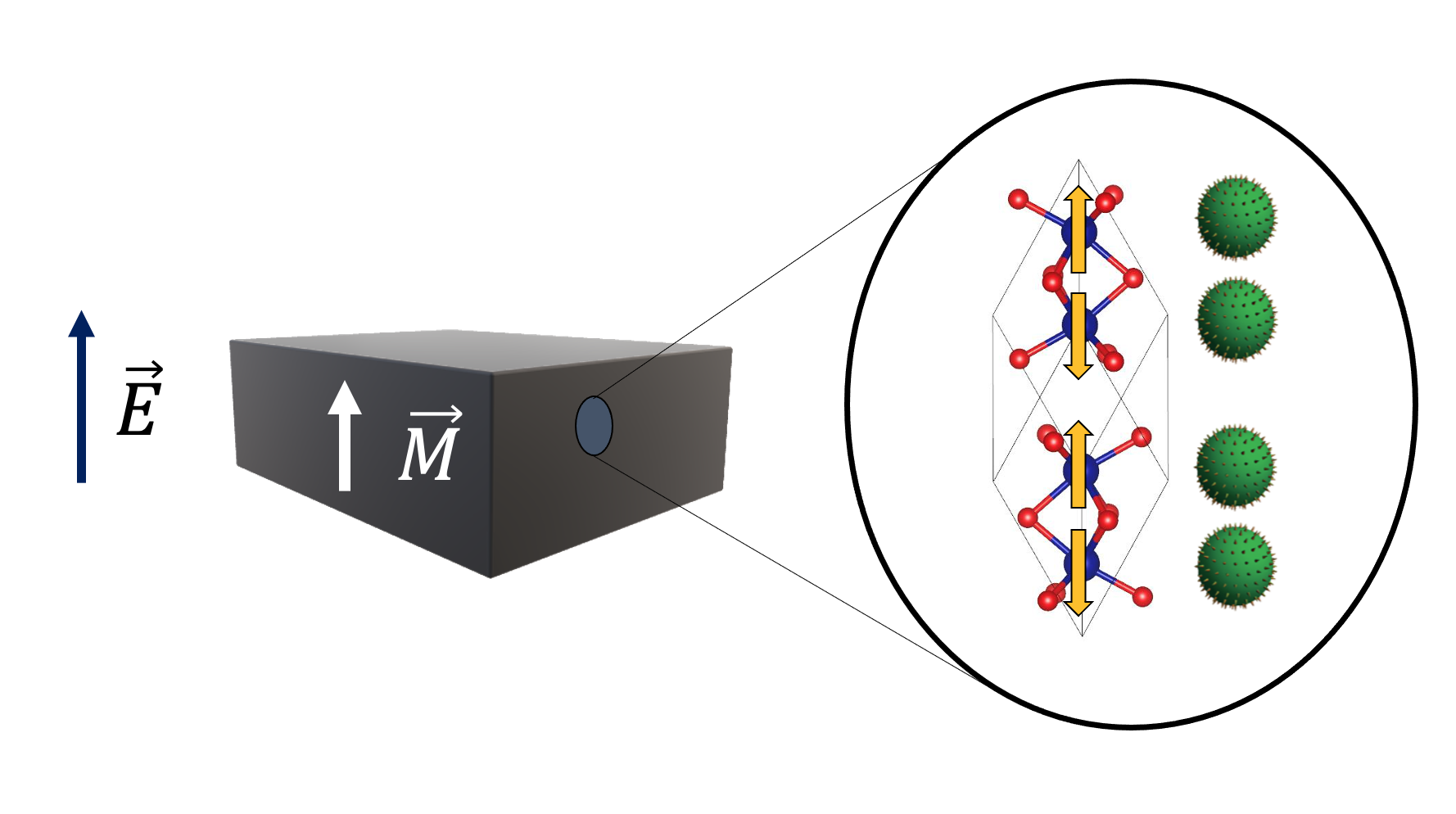Hidden order: magneto-electric multipoles
In recent years magnetoelectric materials have attracted a lot of attention, due to their unique coupling of electric and magnetic degrees of freedom. This coupling of electricity and magnetism is interesting from both a theoretical as well as an applications point of view. A wide range of applications has been proposed, including low energy consumption memory devices, sensors and transistors. Yet, most applications have been limited by the relatively minor size of the effect. A better fundamental understanding of the magnetoelectric and associated effects will allow us to explore the range of possibilities for these fascinating materials further.
The specific symmetry of magneto-electrics alludes to an additional order, ‘hidden’ behind dipole magnetic order. This hidden order can be described in terms of magneto-electric multipoles [1]. I used these multipoles to study and explain the differences between Cr2O3, the prototypical magnetoelectric and its non-magnetoelectric counterpart Fe2O3, which has the same crystal structure, but different magnetic ordering. Here a combination of symmetry analysis and first-principles calculations is employed. Magnetic domain walls, surfaces and interfaces of these materials are studied as well, using the extensive magnetic and magneto-electric toolbox available.
References
- N. A. Spaldin, M. Fiebig and M. Mostovoy, external pageThe Toroidal Moment in Condensed-Matter Physics and its Relation to the Magnetoelectric Effectcall_made, Journal of Physics: Condensed Matter, Vol. 20, p. 434203 (2008)

